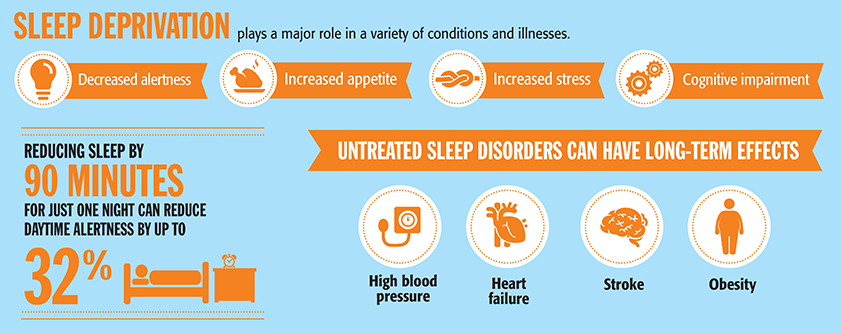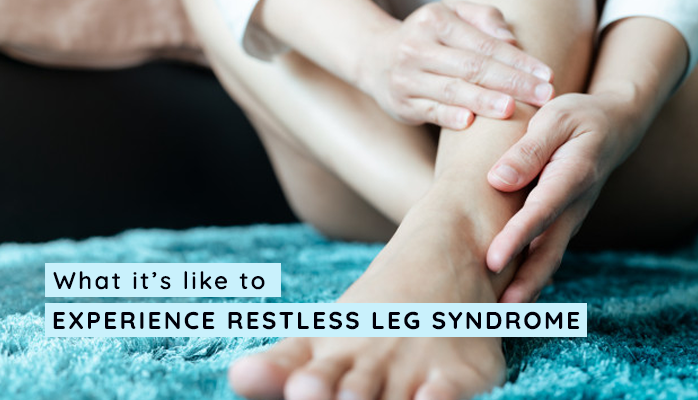What is Restless Leg Syndrome?
Restless leg syndrome (RLS) is a sleeping disorder characterized by uncomfortable feelings in your legs at night, and sometimes other extremities as well. RLS causes enough discomfort to interfere with sleep, leading to sleep deprivation, hence why it is considered a sleep disorder. It can be a potentially serious condition if the severity is bad enough, so if these symptoms are similar to what you've been experiencing, then please continue reading to learn the next steps. .
RLS is caused by your nervous system. The experience of RLS is similar across the affected population in that there is chronic discomfort in the legs at night. This discomfort can also occur in other extremities. It can be mild, uncomfortable, and even intolerable.
RLS is not always consistent, which can make it difficult to diagnose. You are probably familiar with the scenarios people tend to joke about: you have chronic pain and as soon as you go to the doctor the pain goes away; your car is making a funny noise and as soon as you take it to the mechanic the noise disappears. RLS is similar because it comes and goes over a period of time or could be chronic and experienced all the time.
Many people just tolerate the symptoms but this doesn’t have to be the case. This condition does have a name and can be addressed with the help of a doctor or sleep specialist.
What are the Dangers of Restless Leg Syndrome?
The main danger for people who have RLS is sleep deprivation.
Depending on the severity of the condition, sleep deprivation can range from mild to severe. The reason RLS causes sleep deprivation is that the discomfort in your legs and/or extremities causes you to wake up and move your extremity in order to relieve the discomfort. This is a vicious cycle because sleep deprivation can, in turn, worsen your RLS symptoms.
While severe RLS is an obvious problem, as you will very much notice that the discomfort in your legs is not “normal,” mild or intermittent RLS can also be a problem because it’s more likely to go undetected and undiagnosed. In turn, this can lead to mild but chronic sleep deprivation – you might not even notice the sleep deprivation but you will certainly display symptoms.
For us in Alaska, winter time can be problematic because lack of exercise contributes to RLS, and unless you are diligent about getting out in the dark and cold to maintain an exercise regimen, you could be at risk for developing or experiencing worsening/ RLS.

By itself RLS is not dangerous, but the sleep deprivation it leads to can be life altering
What Does It Feel Like to Experience Restless Leg Syndrome?
The feeling of discomfort is universal for people who have RLS. Usually people feel it in their legs, but can also feel it in their arms/hands too. The feeling of discomfort has been described as:
- Aching
- Throbbing
- Burning
- Cramping (especially in calves)
- Jerking
- Buzzing
- Vibrating
- Itchy
- Pins and needles
- Creepy crawly
- Irresistible urge to move your legs to relieve the discomfort
The only thing that makes the feeling get better is to move or massage the limb that has the discomfort. To do this, your body wakes up.
Why Do People Get Restless Leg Syndrome?
The exact cause of restless leg syndrome is still unknown. Although this may not be the answer you were hoping for, recent scientific research has revealed some intriguing connections between RLS and several potential factors:
- Genes are thought to play a role: nearly half of people with RLS have a family member who also has it
- Certain diseases include symptoms of RLS, such as anemia, Parkinson’s, and diabetes
- Some medications may make RLS symptoms worse, such as antinausea drugs or antipsychotic drugs
- Pregnancy may trigger symptoms, especially in last trimester
- Sleep deprivation may trigger symptoms or worsen them
- It affects both sexes but is more common in women
- May begin at any age (even in young children), but people who are severely affected are generally middle aged or older
In some cases, like RLS onset during pregnancy or after sleep deprivation, RLS may go away naturally. In other cases, RLS may be a chronic problem without treatment.
Can RLS be Treated?
The bad news is that RLS cannot be directly treated the way some conditions can be. That being said, there are a number of proactive and preventative measures you can take to prevent or lessen RLS, such as:
- Regular exercise
- Stretching, such as with yoga
- Getting at least 7 hours of sleep per night, at a minimum
- Reducing the use of stimulants like coffee
- Reducing the consumption of alcohol before bed
- Reducing the use of tobacco
- Leg massages before bed
- Hot baths and/or ice packs before bed
- A vibrating pad before bed
Medications are not a default choice for treatment as they can relieve or worsen your symptoms, though some people try medication just to see if they will help.
If you live in Alaska and are concerned that you may be struggling with RLS, take this free online sleep test to talk with one of our sleep health professionals.


